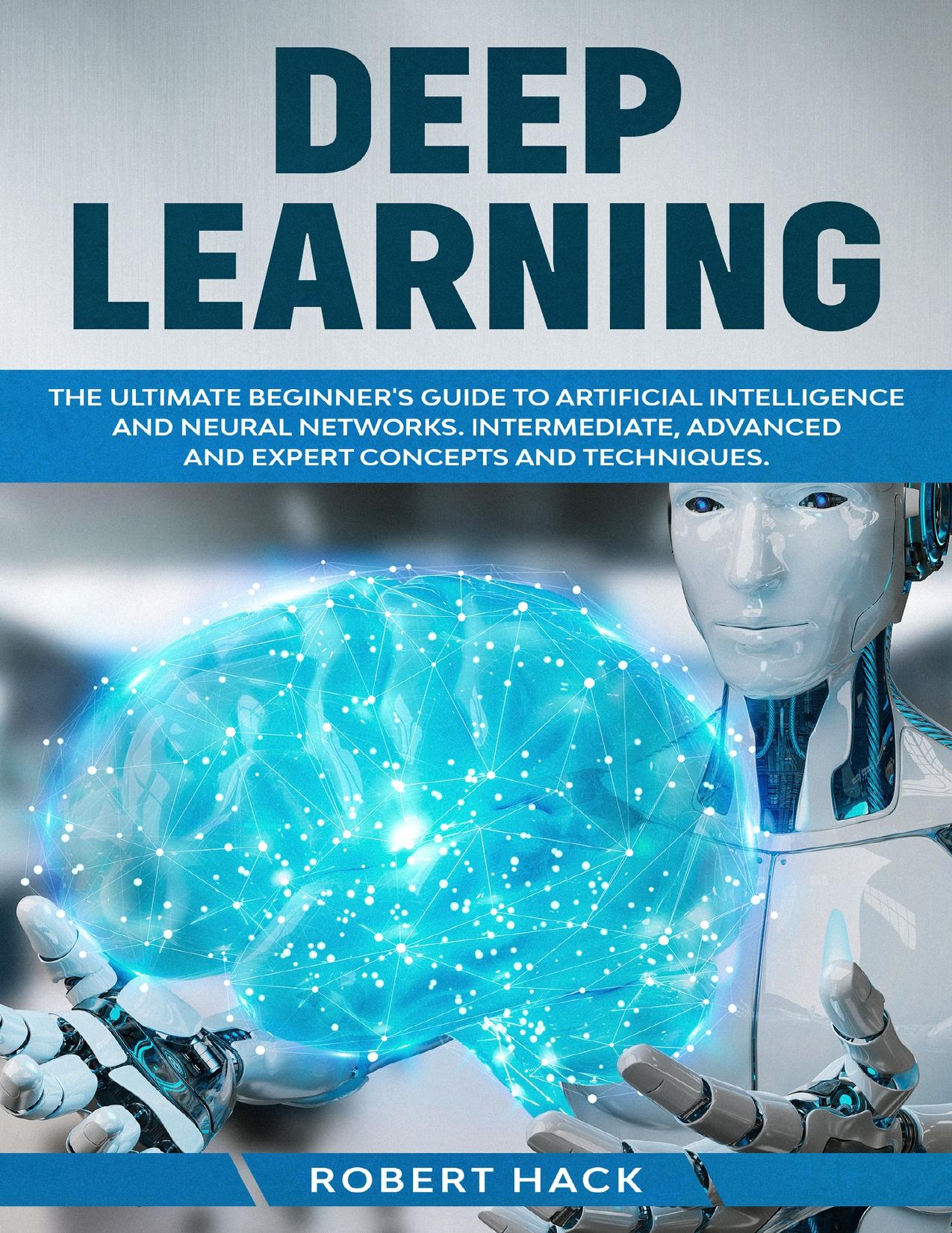Deep Learning: The Ultimate Beginner's Guide to Artificial Intelligence and Neural Networks. Intermediate, Advanced and Expert Concepts and Techniques. by Hack Robert

Author:Hack, Robert [Hack, Robert]
Language: eng
Format: azw3, epub, pdf
Published: 2020-05-12T16:00:00+00:00
Using backpropagation to adjust learning
From an architectural perspective, a neural network does a great job of mixing signals from examples and turning them into new features to achieve an approximation of complex nonlinear functions (functions that you can’t represent as a straight line in the features’ space). To create this capability, neural networks work as universal approximators, which means that they can guess any target function. However, you have to consider that one aspect of this feature is the capacity to model complex functions (representation capability), and another aspect is the capability to learn from data effectively. Learning occurs in a brain because of the formation and modification of synapses between neurons, based on stimuli received by trial- and-error experience. Neural networks provide a way to replicate this process as a mathematical formulation called backpropagation.
Since its early appearance in the 1970s, the backpropagation algorithm has been given many fixes. Each neural network learning process improvement resulted in new applications and a renewed interest in the technique. In addition, the current deep learning revolution, a revival of neural networks, which were abandoned at the beginning of the 1990s, is due to key advances in the way neural networks learn from their errors. As seen in other algorithms, the cost function activates the necessity to learn certain examples better (large errors correspond to high costs). When an example with a large error occurs, the cost function outputs a high value that is minimized by changing the parameters in the algorithm. The optimization algorithm determines the best action for reducing the high outputs from the cost function.
In linear regression, finding an update rule to apply to each parameter (the vector of beta coefficients) is straightforward. However, in a neural network, things are a bit more complicated. The architecture is variable and the parameter coefficients (the connections) relate to each other because the connections in a layer depend on how the connections in the previous layers recombined the inputs. The solution to this problem is the backpropagation algorithm. Backpropagation is a smart way to propagate the errors back into the network and make each connection adjust its weights accordingly. If you initially feed-forward propagated information to the network, it’s time to go backward and give feedback on what went wrong in the forward phase.
Backpropagation is how adjustments required by the optimization algorithm are propagated through the neural network. Distinguishing between optimization and backpropagation is important. In fact, all neural networks use backpropagation, but the next chapter discusses many different optimization algorithms. Discovering how backpropagation works isn’t complicated, even though demonstrating how it works using formulas and mathematics requires derivatives and the proving of some formulations, which is quite tricky and beyond the scope of this book. To get a sense of how backpropagation operates, start from the end of the network, just at the moment when an example has been processed and you have a prediction as an output. At this point, you can compare it with the real result and, by subtracting the two results, get an offset, which is the error.
Download
Deep Learning: The Ultimate Beginner's Guide to Artificial Intelligence and Neural Networks. Intermediate, Advanced and Expert Concepts and Techniques. by Hack Robert.epub
Deep Learning: The Ultimate Beginner's Guide to Artificial Intelligence and Neural Networks. Intermediate, Advanced and Expert Concepts and Techniques. by Hack Robert.pdf
This site does not store any files on its server. We only index and link to content provided by other sites. Please contact the content providers to delete copyright contents if any and email us, we'll remove relevant links or contents immediately.
| Computer Vision & Pattern Recognition | Expert Systems |
| Intelligence & Semantics | Machine Theory |
| Natural Language Processing | Neural Networks |
Algorithms of the Intelligent Web by Haralambos Marmanis;Dmitry Babenko(16237)
Jquery UI in Action : Master the concepts Of Jquery UI: A Step By Step Approach by ANMOL GOYAL(9389)
Test-Driven Development with Java by Alan Mellor(7737)
Data Augmentation with Python by Duc Haba(7610)
Principles of Data Fabric by Sonia Mezzetta(7381)
Learn Blender Simulations the Right Way by Stephen Pearson(7296)
Microservices with Spring Boot 3 and Spring Cloud by Magnus Larsson(7139)
Hadoop in Practice by Alex Holmes(6589)
RPA Solution Architect's Handbook by Sachin Sahgal(6519)
The Infinite Retina by Robert Scoble Irena Cronin(6218)
Big Data Analysis with Python by Ivan Marin(5937)
Life 3.0: Being Human in the Age of Artificial Intelligence by Tegmark Max(5520)
Pretrain Vision and Large Language Models in Python by Emily Webber(4897)
Infrastructure as Code for Beginners by Russ McKendrick(4657)
Functional Programming in JavaScript by Mantyla Dan(4438)
WordPress Plugin Development Cookbook by Yannick Lefebvre(4386)
The Age of Surveillance Capitalism by Shoshana Zuboff(4252)
Embracing Microservices Design by Ovais Mehboob Ahmed Khan Nabil Siddiqui and Timothy Oleson(4149)
Applied Machine Learning for Healthcare and Life Sciences Using AWS by Ujjwal Ratan(4136)
